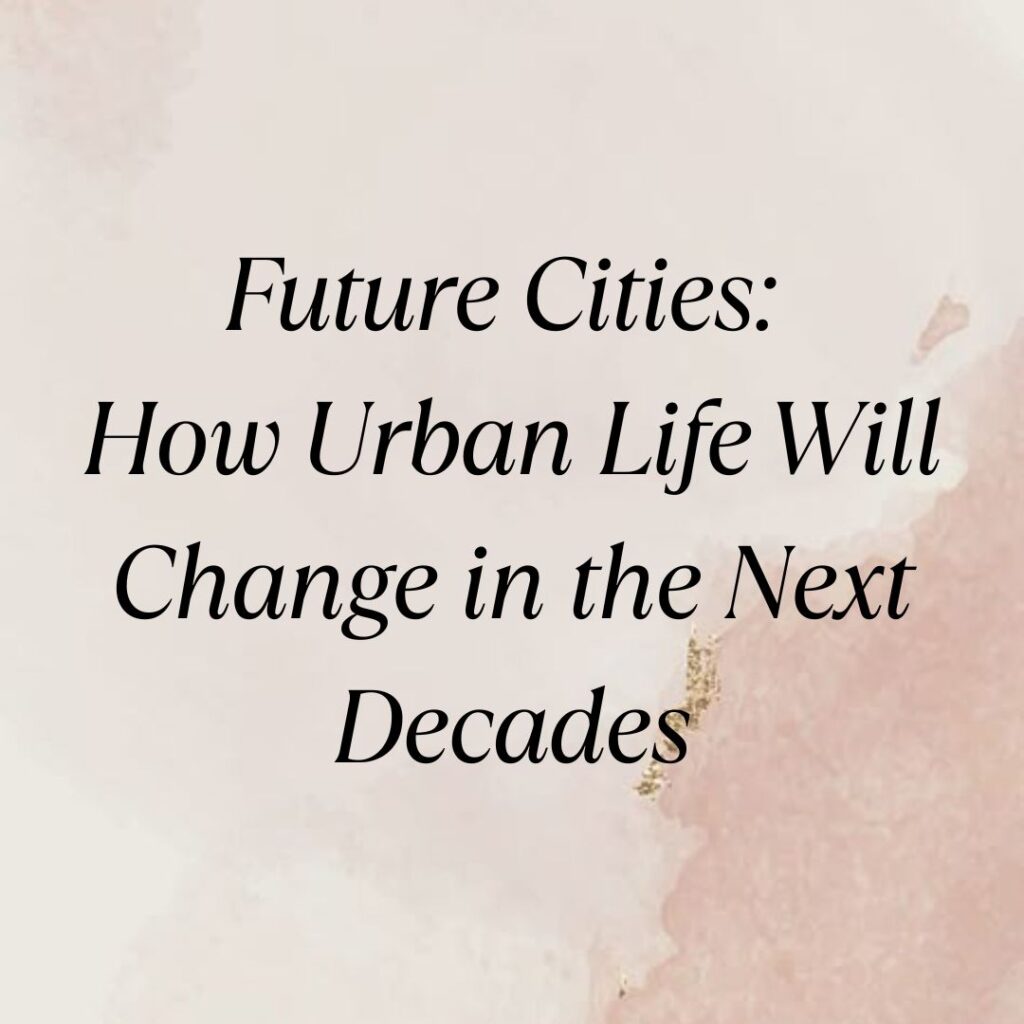Welcome to another insightful piece from Riya’s Blogs, where we dive into the exciting topic of future cities and how urban life is poised to transform over the coming decades. As our world evolves at an unprecedented pace, so too must our cities adapt to meet the demands of tomorrow’s inhabitants. In this article, we’ll explore key trends, innovations, and challenges that will shape the cities of the future.
Urbanization Trends and Challenges
Urbanization continues to be a dominant global trend, with more people moving to cities seeking better opportunities and quality of life. By 2050, it’s estimated that nearly 70% of the world’s population will reside in urban areas. This rapid growth presents both opportunities and challenges for urban planners, policymakers, and residents alike.
Cities are becoming denser, leading to increased pressure on infrastructure, transportation systems, and housing. Sustainable urban planning is now more critical than ever to ensure cities remain livable and efficient hubs of economic and social activity.
Technology and Innovation Driving Change
The future of cities is intricately tied to technological advancements. From smart grids and autonomous vehicles to AI-driven governance and renewable energy solutions, technology is reshaping urban landscapes in profound ways. Imagine a city where traffic flows seamlessly, waste is efficiently managed through IoT sensors, and buildings generate their own energy using solar panels and wind turbines.
Innovative urban farming techniques such as vertical gardens and hydroponics are also gaining traction, promising to revolutionize food production in densely populated areas. This not only enhances food security but also promotes sustainability by reducing the carbon footprint associated with food transportation.
Sustainability and Environmental Impact
One of the most pressing challenges facing future cities is mitigating environmental impact and combating climate change. Sustainable architecture, green spaces, and zero-emission public transportation are becoming standard practices in urban development. Cities are increasingly adopting circular economy principles, where resources are reused and recycled to minimize waste and environmental degradation.
Efforts to combat air pollution and improve air quality are also at the forefront of urban planning initiatives. This includes promoting electric vehicles, implementing stricter emissions standards for industries, and enhancing green infrastructure to absorb carbon dioxide and filter pollutants.
Social Dynamics and Community Well-being
Beyond infrastructure and technology, the future of cities will be shaped by social dynamics and community well-being. Urban planners are placing greater emphasis on creating inclusive spaces that foster social cohesion and diversity. This includes designing mixed-use developments where residential, commercial, and recreational facilities coexist harmoniously.
The concept of “15-minute cities” is gaining popularity, where residents can access essential services and amenities within a 15-minute walk or bike ride from their homes. This not only reduces reliance on cars but also promotes a healthier, more active lifestyle.
Challenges Ahead: Governance and Equity
While the future of cities holds immense promise, it’s not without its challenges. Issues of governance, equity, and digital divide must be addressed to ensure that technological advancements benefit all segments of society. Access to affordable housing, healthcare, education, and digital connectivity remains a priority for inclusive urban development.
City leaders must navigate complex socio-economic landscapes to create policies that promote fairness and equality while fostering innovation and economic growth. Collaboration between public and private sectors, as well as active citizen engagement, will be crucial in shaping equitable and resilient cities for the future.
Conclusion
In conclusion, the cities of tomorrow will be vibrant hubs of innovation, sustainability, and inclusivity. As we look ahead, it’s clear that embracing technological advancements, prioritizing sustainability, and promoting social well-being are key to creating cities that are not only livable but thrive in the face of global challenges.
To stay updated on the latest trends and developments in urban planning and future cities, visit Riya’s Blogs. Join us in envisioning a future where cities are not just places to live, but platforms for progress and prosperity.
Thank you for reading! Don’t forget to share your thoughts and ideas on how you envision the future of cities in the comments below.







